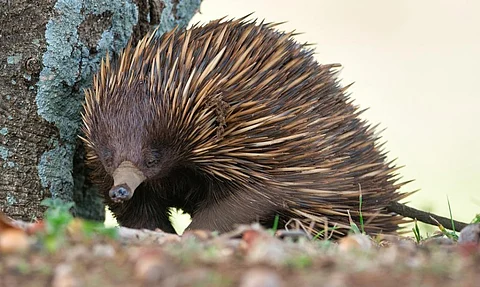

Mammals may have evolved in Gondwana, the southern landmass formed from the supercontinent Pangaea millions of years, rather than its northern counterpart Laurasia, according to new research published December 15, 2022.
The researchers studied the molars of fossils found in Madagascar, South America and India to come to this conclusion.
Modern mammals consist of three sub groups: Montremes, marsupials and placentals. Montremes are primitive mammals that lay large eggs and have a common opening for the urogenital and digestive systems.
Marsupials are mammals whose young are born incompletely developed. They develop inside a pouch on the mother’s belly. The third subgroup is placentals which carry the foetus until a late stage of development.
Montremes include the platypus and echidna of Australia. Marsupials, too, are mostly found in Australia and New Guinea. Placentals comprise the majority of mammals including humans.
The researchers had studied the tribosphenic molars of therian mammals found in early and middle Jurassic sediments from Madagascar, South America and India. ‘Theria’ is a subclass of mammals that includes marsupials and placentals but excludes montremes.
Madagascar, South America and the Indian subcontinent were part of Gondwana along with Africa, South America and Australia. Europe, Asia (excluding India) and North America formed Laurasia.
The researchers dated the fossils and found them to be around 50 million years older than similar remains found in the northern hemisphere.
These findings had turned 200 years of thinking on its head, Tim Flannery, honorary associate at the Australian Museum and lead author of the study, was quoted as saying in a statement on the science news aggregation website EurekAlert.
All this while it was believed that placentals and marsupials had originated in the northern hemisphere. This is because “that is where the majority of mammal diversity is now found, and where the most abundant fossils occur”, Flannery noted.
“Our research indicates that Theria evolved in Gondwana, thriving and diversifying there for 50 million years before migrating to Asia during the early Cretaceous. Once they arrived in Asia they diversified rapidly, filling many ecological niches,” Kris Helgen from the Australian Museum and co-lead author of the paper was quoted as saying.
Australia’s current status as a ‘marsupial paradise’ is proof that the findings could be true. The world’s smallest continent is home to the greatest mammalian diversity in the world, more than any other continent.
Half of the over 350 native mammals of Australia are marsupials including kangaroos, wombats, koalas, and Tasmanian devils. There are also montremes and placentals like bats and rodents.
However, the highest number of mammalian extinctions in the world have also happened in Australia, according to the 2022 State of the Environment brought out by the Australian government.
Helgen was quoted as saying that human habitation, the rapid rate of climate change, destruction of habitat and introduction of exotic species were responsible for this.
The Gondwanan Origin of Tribosphenida (Mammalia) was published in the journal Alcheringa.
Read more: